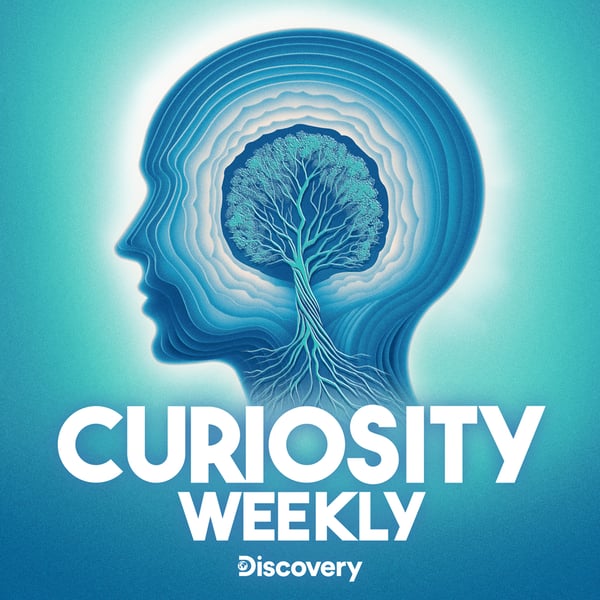Ocean Literacy & Conservation
Curiosity Weekly
Warner Bros. Discovery
4.6 • 935 Ratings
🗓️ 4 June 2025
⏱️ 31 minutes
🧾️ Download transcript
Summary
The key to protecting our oceans is understanding them. So, today, host Dr. Samantha Yammine leans into learning about the power and struggles of the environments that keep our planet blue. From the power of bioluminescence and how it’s changed how we study molecular biology to the importance of salt for our bodies and cultures, there is so much to absorb when it comes to our oceans. Then, producer Teresa Carey speaks with Dr. Gabby Ahmadia from the World Wildlife Fund about the importance of community-based conservation, research in coastal communities and how, with the right methodologies and funding, there is hope for our ocean’s health in the future.
Link to Show Notes HERE
Follow Curiosity Weekly on your favorite podcast app to get smarter with Dr. Samantha Yammine — for free! Still curious? Get science shows, nature documentaries, and more real-life entertainment on discovery+! Go to https://discoveryplus.com/curiosity to start your 7-day free trial. discovery+ is currently only available for US subscribers.
Hosted on Acast. See acast.com/privacy for more information.
Transcript
Click on a timestamp to play from that location
| 0:00.0 | The term ocean literacy means understanding how we as humans affect the ocean and how the ocean in turn affects us. |
| 0:09.9 | Pretty simple concept, right? Well, not quite. The ocean's simple as if. Fortunately, there are plenty of |
| 0:17.8 | people out there who are committed to making sure we protect the ocean by understanding its power and its nuance. |
| 0:24.4 | And we have a few of those experts joining us today. |
| 0:27.7 | I'm Dr. Samantha Emeen and welcome to Curiosity Weekly from Discovery. |
| 0:32.0 | There are a lot of breadcrumbs spread around the ocean leading us to one main message. |
| 0:37.0 | Things are changing. So I wanted to learn |
| 0:39.5 | about bioluminescence to uncover what it can teach us about the chemical processes behind some of our |
| 0:44.6 | favorite sea creatures. I'll talk about that first. Then Teresa from our team speaks with Dr. Gabby |
| 0:50.2 | Amadia from the World Wildlife Fund about our work as a conservation scientist. And finally, |
| 0:55.7 | you cannot talk about the ocean without mentioning its main characteristic, salt. Or I guess you could, |
| 1:02.3 | but we would never. We'll dig into the science behind the world's favorite seasoning, |
| 1:07.2 | and while we don't just love it, we actually need it. Let's get started. One of my favorite |
| 1:13.6 | parts about working in a lab was getting to make different parts of a cell light up under the |
| 1:17.8 | microscope. Picture a firework blooming across the dark sky or a fluorescent web with thousands |
| 1:23.6 | of strands. That's what some of my favorite cells looked like through the lens. |
| 1:32.9 | But fluorescent microscopy doesn't just make for pretty pictures. It helps us label tiny proteins in cells so we can see biology in action, like a biker wearing a reflective vest to stand |
| 1:38.8 | out at night. That kind of real-time view can help scientists pinpoint problems and potential |
| 1:43.3 | treatments. |
| 1:50.5 | Fluorescent proteins were an incidental finding from a simple curiosity about bioluminescence. |
| 1:56.1 | Think glowworms, fireflies, a bluish glow of plankton on the water's edge, like when the ocean lights up in life of pie or marijuana. |
| 1:58.5 | Yes, it's real. |
... |
Please login to see the full transcript.
Disclaimer: The podcast and artwork embedded on this page are from Warner Bros. Discovery, and are the property of its owner and not affiliated with or endorsed by Tapesearch.
Generated transcripts are the property of Warner Bros. Discovery and are distributed freely under the Fair Use doctrine. Transcripts generated by Tapesearch are not guaranteed to be accurate.
Copyright © Tapesearch 2025.

